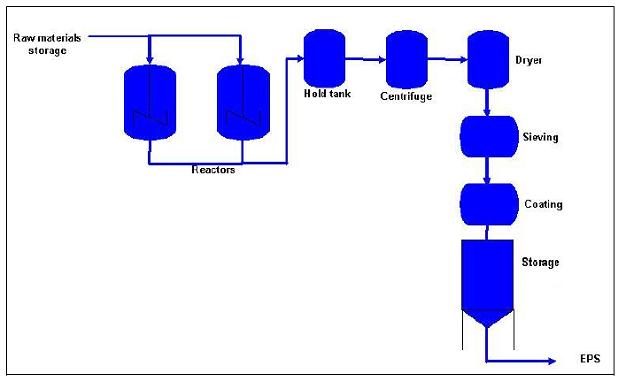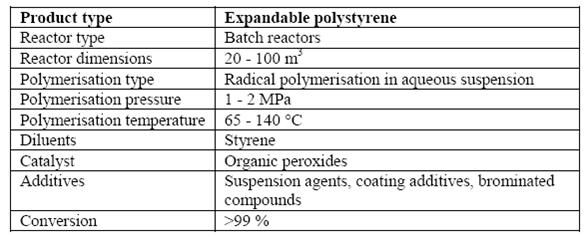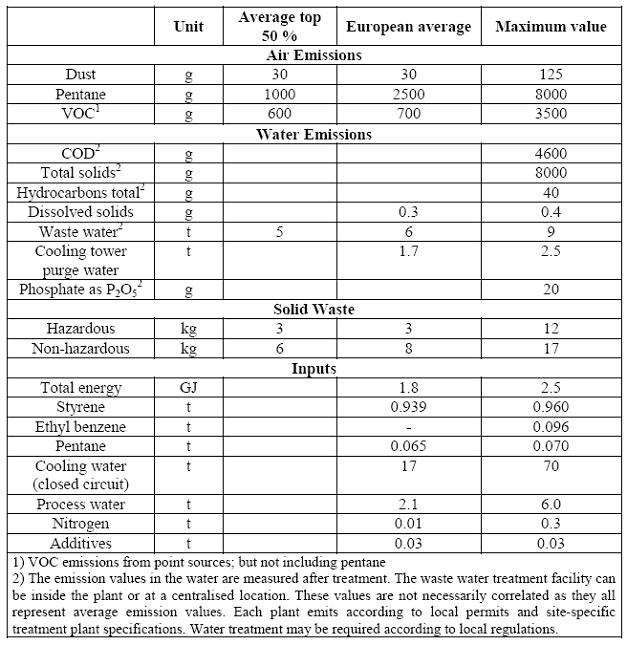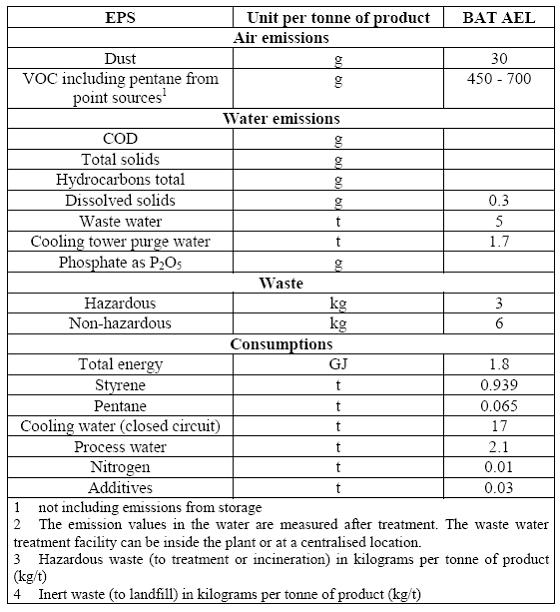Expandable or foam polystyrene (EPS)
Back to Information about polystyrene
1 General description
The techniques used for the production of expandable polystyrene (EPS) beads and their processing to expanded polystyrene foams were developed at the end of the 1940s by BASF who marketed the new raw material under the trade name Styropor. Due to licensing and the expiry of patents, other raw material manufacturers and trade names have appeared. Expandable polystyrene is produced by suspension polymerisation of styrene with the addition of blowing agents; the resulting polymer beads are then sieved into various bead sizes. Depending on the end use, different coatings may be applied. In their final form, EPS foams contain about 95 % air by volume. The most important product properties of EPS foams are their excellent thermal insulation, good strength and shock absorption even at low densities. The major applications of lightweight rigid EPS foam in Europe are in the construction industry, as thermal insulation for walls, cavities, roofs, floors, cellars and foundations. Boards, either cut to shape from blocks or contour-moulded at densities typically ranging from 10 – 50 kg/m3, are used either as such or in combinations with other building materials, to manufacture laminated elements, sandwich panels, etc. The success of EPS foam as a packaging material is based upon overall properties as well as its costeffectiveness. Moulded boxes are equally suitable for packing highly sensitive instruments, fragile glass, ceramic products and heavy machine parts, as well as for perishable food such as fish, fruit and vegetables. EPS packaging has contributed to outstanding savings by reducing damage, shipping weight and labour costs.
2 Flow diagram of EPS production
Figure 1: Flow diagram showing EPS production
3 Technical parameters
Table 1: Technical parameters of EPS
4 Emission and consumption data of EPS plants
Table 2: Emission and consumption data of EPS plants
5 Emission and consumption levels associated with BAT for the production of polystyrene
Table 3: BAT associated emission and consumption levels (BAT AEL) for the production of EPS
Literature: BAT for Polymers, October 2006
6 Production of foam insulation made from expanded polystyrene (EPS)
In general, the production of EPS consists of three steps [1]:
1.) Pre-Expansion
2.) Maturation
3.) Final Foaming
The raw material fed to the pre-expansion process is sphere-shaped expandable polystyrene beads that already carry the blowing agent pentane. During the pre-expansion process, expandable polystyrene beads are heated in the so called pre-foamer above the boiling temperature of the blowing agent, which leads to the expansion of the beads by a factor 40 to 50 [1]. The thermal energy needed for the pre-expansion processes is delivered by steam at a pressure of approximately 1 bar. The EPS beads leave the pre-expansion process in a state of low mechanical strength due to an internal vacuum inside the beads caused by the rapid expansion. Therefore, it is necessary to allow the expanded polystyrene beads to harmonize their internal pressure with the atmospheric pressure via means of air diffusion into the beads. This is carried out during the second process step, the maturing. In addition to mechanical stabilization of the EPS beads the maturing process is also necessary to decrease the amount of water carried inside the beads, which reduces the energy demand in the third process step, the final foaming or molding.
Depending on the type of molding machine the molding process can be either continuous or discontinuous. In this case study, the molding process is carried out with discontinuous vacuum-supported block molds. The molding process in general consists of a number of predefined cycles (filling, steaming, cooling, and demolding) [2], whose parameters vary with the desired product attributes. At the end of the production process, the finished EPS block is ejected from the mold and temporarily stored for drying purposes until it reaches the desired humidity. In a last step, the EPS block can be cut into tiles, for example, with hotwire equipment.
Literature:
[1] Eaves D. Handbook of Polymer Foams. Shrewsbury: Rapra Technology Ltd.; 2004.
[2] Scheirs J, Priddy D. Modern Styrenic Polymers: Polystyrenes and Styrenic Copolymers (Wiley Series in Polymer Science). Chichester: John Wiley & Sons Ltd.; 2003.
Back to Information about polystyrene



